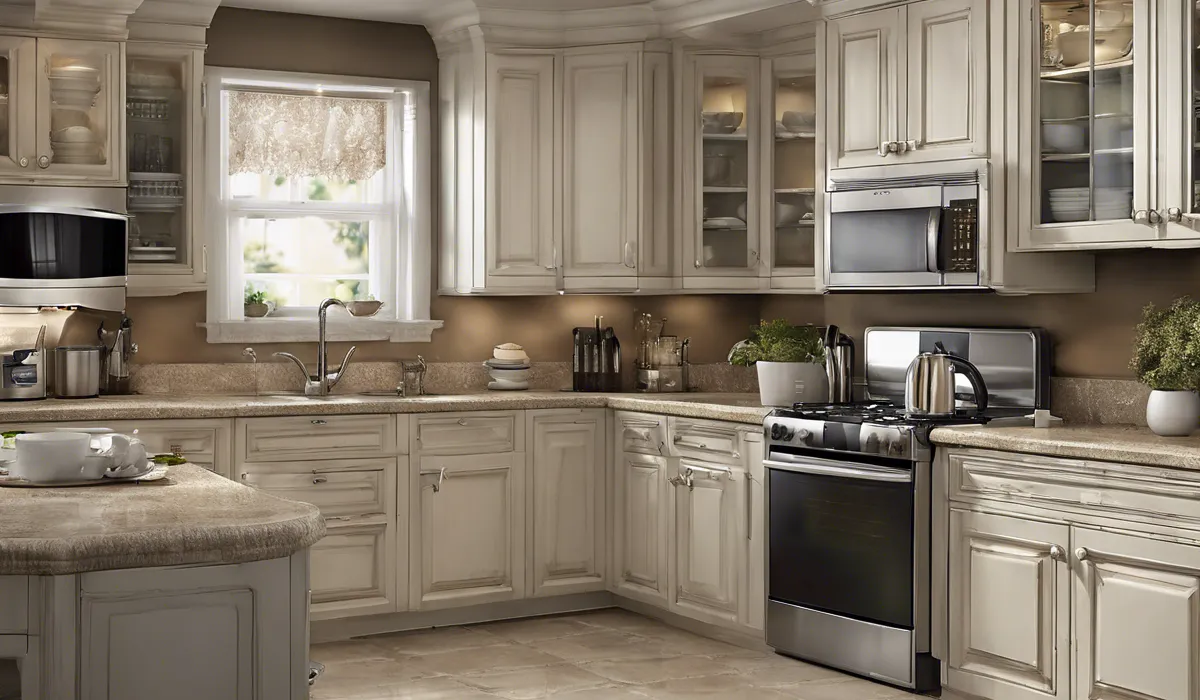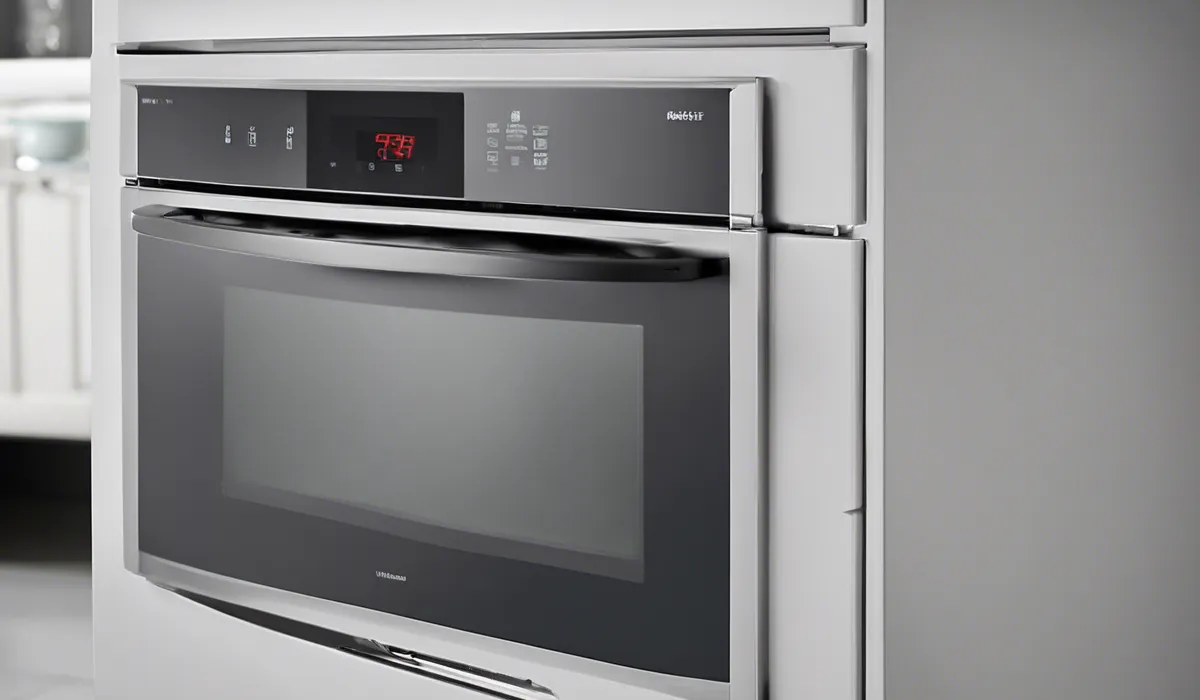Can Dishwasher and Microwave Be on Same Circuit? Find Out!
Typically, a dishwasher and microwave should not be on the same circuit. Building codes often require that large appliances have dedicated circuits to prevent overloading. Check local electrical codes for specific requirements in your area.
Electrical Requirements for Kitchen Appliances

Understanding Circuit Requirements
In the heart of every kitchen lies a complex network of electrical circuits, each designed to safely power our appliances.
Circuit requirements matter because they ensure that the electrical load from our appliances does not exceed the capacity of the circuit, which can lead to overheating and potentially cause fires.
Each circuit is typically designed to handle a specific amount of electrical current, measured in amperes or amps.
For kitchen appliances like dishwashers and microwaves, which tend to draw a significant amount of power, understanding and adhering to these requirements is crucial for safety and functionality.
Electrical Consumption of Dishwashers and Microwaves
Dishwashers and microwaves are common kitchen appliances with substantial power needs. On average, a dishwasher uses about 10 to 15 amps, while a microwave can vary greatly, generally using 5 to 15 amps depending on the model and power settings.
When operating simultaneously, these appliances can easily surpass the standard 15 to 20-amp circuit capacity typical in most kitchens. This is why understanding their electrical consumption is vital to prevent overloading circuits.
Adhering to Electrical Codes and Standards
Electrical codes and standards, such as those set forth in the National Electrical Code (NEC), exist to establish the minimum requirements for safe electrical installations. These codes often stipulate that kitchen appliances should have dedicated circuits.
For instance, the NEC typically requires that a dishwasher be on a dedicated 15-amp or 20-amp circuit.
Microwaves, especially those installed over the range, may also require a separate 20-amp circuit. Local building codes can adapt these standards, so it is important to check the specific requirements in your area.
Importance of the National Electrical Code
Following the National Electrical Code (NEC) is not merely a good practice; it is a safety imperative. The NEC’s guidelines help prevent electrical overloads, shocks, and fires.
By adhering to these standards, homeowners can ensure their kitchen’s electrical system operates within safe parameters, providing peace of mind and protection for their households.
Pros and Cons of Sharing a Circuit

Advantages of Separate Circuits
Dedicating separate circuits to individual appliances ensures that each has enough power to operate efficiently without tripping the circuit breaker.
This organization can also simplify troubleshooting electrical issues, as problems can be isolated to a specific circuit.
A dedicated circuit minimizes electrical interference between appliances, which can be important for sensitive electronics and ensures optimal performance.
Risks of Circuit Sharing
When a dishwasher and microwave share the same circuit, there is a considerable risk of overloading that circuit, particularly if both appliances are used simultaneously.
Overloaded circuits can lead to tripped breakers, which can be a nuisance but also pose a fire hazard if the wiring is not adequately protected. Additionally, voltage drops caused by overloading can lead to appliance damage or reduced lifespan.
Acceptable Scenarios for Sharing a Circuit
Sharing a circuit between a dishwasher and microwave may be acceptable in scenarios where the total amperage draw is within the capacity of the circuit, and the use of these appliances is staggered.
However, this is often not recommended due to the variable power consumption of microwaves during their operation. If a shared circuit must be used temporarily, it is crucial to closely monitor the electrical load to avoid potential issues.
Considering Safety and Convenience
The decision to share a circuit should always prioritize safety and convenience. It may seem cost-effective or easier to run one circuit for multiple appliances, but the potential risks often outweigh these benefits.
Ensuring that each appliance has its dedicated circuit is a proactive step towards creating a safer and more efficient kitchen environment.
Best Practices for Dishwasher and Microwave Installation

Circuit Allocation in Kitchen Design
When designing or renovating a kitchen, it’s best to plan for separate circuits for each major appliance. This foresight ensures that the electrical system can handle the load and conforms to building codes.
Allocating circuits during the design phase can save time, money, and headaches in the long run, as it is more complicated to retrofit electrical systems after construction is complete.
Assessing Electrical System Capacity
Before installing new appliances, assess the current electrical system’s capacity. This assessment includes checking the amperage of existing circuits, the condition of the wiring, and the capacity of the electrical panel.
It is essential to ensure that the overall system can support new appliances without overloading.
Consulting a Licensed Electrician
Consulting with a licensed electrician is a critical step before making any decisions about electrical installations.
These professionals can provide valuable insight into the specific needs of your home’s electrical system, offer solutions that comply with local codes, and ensure that all work is done safely and to the highest standard.
Upgrades for Safety and Efficiency
Upgrading the electrical system can be an opportunity to enhance both safety and efficiency.
This might involve adding new circuits, updating the electrical panel to accommodate higher amperages, or installing GFCI (Ground Fault Circuit Interrupter) outlets near water sources.
Upgrades like these not only improve the overall safety of the kitchen but can also add value to the home.
Maintaining Kitchen Electrical Systems
Maintenance is key to ensuring that the kitchen’s electrical system remains safe and functional over time. This includes regularly checking for signs of wear and tear, testing circuit breakers, and ensuring that GFCI outlets function correctly.
By staying on top of maintenance, homeowners can prevent potential problems and ensure their kitchen remains a safe place for family and friends to gather.
FAQs About Dishwasher and Microwave on the Same Circuit
Can I have my dishwasher and microwave on the same electrical circuit?
Generally, it is not recommended to have a dishwasher and microwave on the same circuit. They should each have their own dedicated circuit to prevent overloading.
What are the risks of putting a dishwasher and microwave on the same circuit?
Putting a dishwasher and microwave on the same circuit increases the risk of overloading the circuit, which can lead to tripped breakers or even pose a fire hazard.
Do building codes allow for a dishwasher and microwave to share a circuit?
Building codes typically require large appliances like dishwashers and microwaves to have separate dedicated circuits. You should check your local electrical codes for specific requirements.
How can I tell if my dishwasher and microwave are on the same circuit?
You can determine if your dishwasher and microwave are on the same circuit by checking your home’s electrical panel for the circuit assignments or by using a circuit tester.
What should I do if my dishwasher and microwave are currently on the same circuit?
If your dishwasher and microwave are on the same circuit, you should consider having an electrician rewire one of the appliances to a separate circuit to comply with building codes and for safety.
Final Thoughts
It’s generally inadvisable to have a dishwasher and microwave on the same circuit due to potential overloading. Large appliances typically require individual circuits for safe operation.
Adherence to local building and electrical codes, which dictate specific requirements for circuit use, is essential for ensuring both safety and compliance in any given area.





